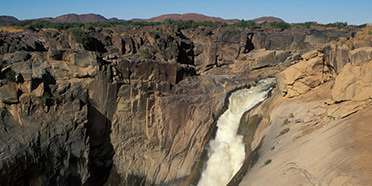
Safari Tours to Augrabies Falls NP
-
![10-Day Kalahari Desert, Fish River Canyon & Orange River]()
10-Day Kalahari Desert, Fish River Canyon & Orange River
$796 pp (USD)
Namibia & South Africa: Self-driveCamping & Tented Camp
You Visit: Cape Town (Start), West Coast NP, Nieuwoudtville (Town), Augrabies Falls NP, Kgalagadi TP, |Ai-|Ais/Richtersveld TP, Fish River Canyon (|Ai-|Ais/Richtersveld TP), Orange River, Cederberg (Mountain Range), Cape Town (End)

Southern African Tours
4.7/5 – 65 Reviews
-
![8-Day Kalahari Self-Drive Budget Camping Tour]()
8-Day Kalahari Self-Drive Budget Camping Tour
$420 to $524 pp (USD)
South Africa: Self-driveCamping
You Visit: Upington (Start), Kgalagadi TP, Augrabies Falls NP, Upington (End)

Bonsai-SA 4x4 Adventures and Tours
5.0/5 – 15 Reviews
-
![8-Day Kalahari Self-Drive Mid-Range Tour]()
8-Day Kalahari Self-Drive Mid-Range Tour
$570 to $613 pp (USD)
South Africa: Self-driveChalet
You Visit: Upington (Start), Kgalagadi TP, Augrabies Falls NP, Upington (End)

Bonsai-SA 4x4 Adventures and Tours
5.0/5 – 15 Reviews

 South Africa Parks
South Africa Parks













